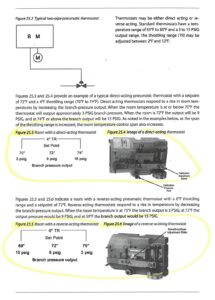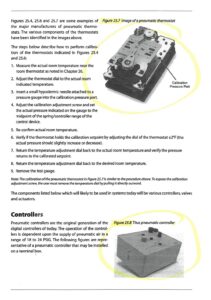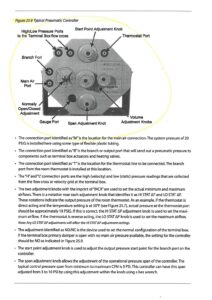By Charles W. Kaupp, TBE, CxA January 2023
Southern Independent Testing Agency, Inc.
Reviewed by Brian Kaupp, Eric Jenison, John Kneiss and Curtis Smart
To some older technicians, this article could be a shot from the past and to younger technicians, may say what are pneumatic VAV boxes?
To start with, the following items are notes, which relate in general to pneumatic controlled systems.
- Things to Know:
- Inspect the pneumatic compressor to ensure that it has been properly check, tested, and started by the Controls Contractor.
- Most pneumatic control systems operate and control from 13 PSI to 20 PSI.
- All pneumatic control systems should have a dryer installed to keep moisture out of the control lines.
- They are not as accurate as the digital control system to date.
- They require routine recalibration on an annual or every 2-years basis.
- Pneumatic VAV boxes:
- Check and ensure that the pneumatic system thermostats, system static pressure controller, VAV boxes and all other controls are complete and have been initially checked, tested, and started by the Controls Contractor.
- Check to ensure that pneumatic control system pressure is operating to produce 13 PSI to 20 PSI throughout the system.
- Thermostat must be calibrated to control from roughly 8 PSI to 12 PSI.
- Mechanical VAV boxes would require adjusting by a locking collar on the shaft, on the pneumatic operator (normally minimum) and adjusting of the arm on the shaft of the VAV box (normally maximum).
- Adjustable pneumatic control boxes were installed on later VAV boxes, as the technology advanced, allowing adjusting of the min/max by a dial with a small flat edge screwdriver (see figure 25.9).
- Pneumatic thermostat controls:
- Box controls can vary depending on the age of the system (see figure 25.8 and 25.9).
- Thermostat (Direct/Reverse Acting) – The calibration will vary from 3 PSI to 15 PSI, depending on the throttling range (reference attached pictures). Calibration of the thermostat is required to allow proper testing and adjusting of a pneumatic controlled VAV box (see figure 25.4 direct acting).
- Pit Falls:
- Pneumatic VAV boxes with electric or HW reheat coils. When setting the minimum air volume using the thermostat: First set min air flow and next about one degree less, the electric or HW coil is to activate. When
s:\sita articles, biz card, marketing\articles\pneumatic vav box – ck 01-24-23.doc thermostat goes out of calibration, this sequence can go crazy, with reheat on first before min flow or reheat not coming on until a few degrees below set point. - Pneumatic system pressure not meeting a constant psi throughout. This problem could be due to a system dryer problem, allowing moisture into the tubing. Oil in the system due to an old compressor and/or leaks in the
pneumatic piping or tubing. As systems get older, all of the above could be the issue. - Comfort issues will require actually going to the problem area, checking the thermostat for calibration and/or going about the ceiling to the VAV
box. With present DDC control systems, most adjustments and/or changes can be handled via site or off-site computer. - Early pneumatic VAV boxes were pressure dependent, therefore if system pressure changed from the original T&B period, the box min/max CFM would change. Controlling consent system ductwork static pressure is a major item to always be checked first.
- Later pneumatic VAV boxes came with flow sensing devices at the inlet, connected to a volume regulator. This allowed them to be system pressure independent. However, the main static pressure senser still needs to maintain to set pressure, requiring checking calibration, which normally controls fan inlet vanes.
- Pneumatic VAV boxes with electric or HW reheat coils. When setting the minimum air volume using the thermostat: First set min air flow and next about one degree less, the electric or HW coil is to activate. When
In closing, technicians of today faced with a pneumatic system, coupled with this article and after working on about twenty pneumatic VAV boxes, will create an expert. The author (Chuck Kaupp) of this article had 6 years of HVAC design and 53 years of T&B experience (actual field testing 30 years). The reviews of this article were by Brian Kaupp, Eric Jenison, John Kneiss and Curtis Smart, who have combined experience of over 150 years. Good luck to all who encounter old pneumatic VAV box systems.



